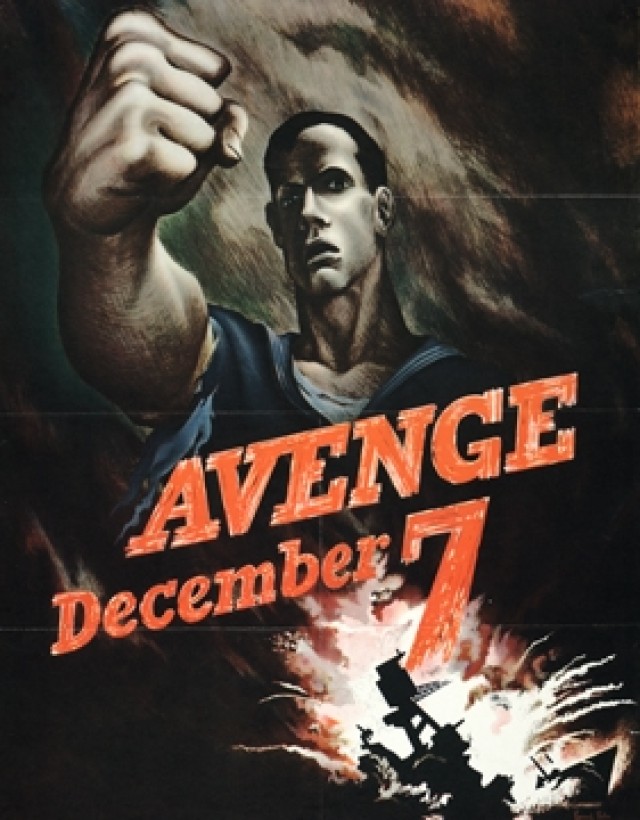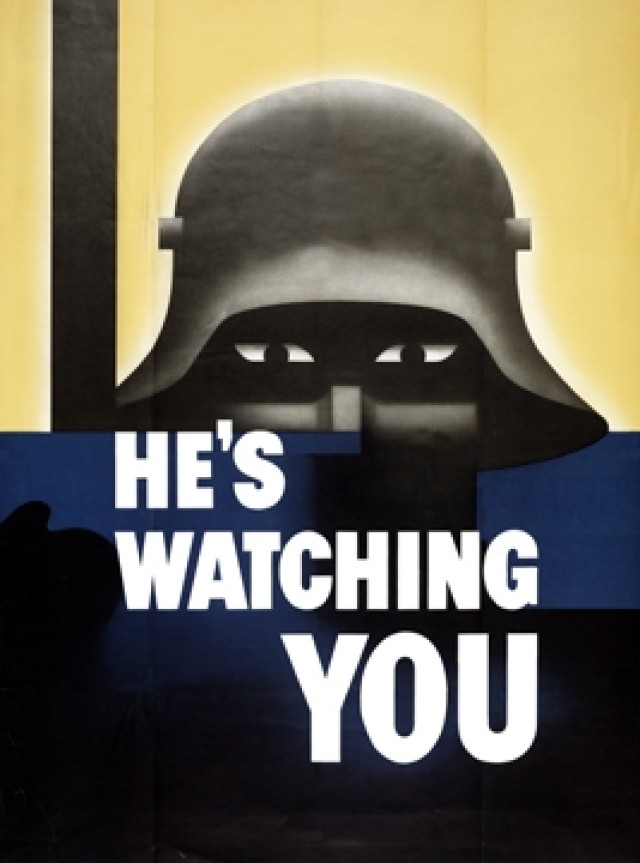In May 1945, the Allied powers celebrated "Victory in Europe" over an evil Nazi regime. Personal contributions and sacrifices of all Americans helped win that war and thus generate the well-earned euphoria of that historic month. Many factors contributed to that victory Aca,!" including patriotic posters.
Poster Art had been introduced to an American audience in World War I by the Division of Pictorial Publicity of the United States Committee on Public Information, founded in April of 1917. Organized out of the Society of Illustrators, the division included many of the leading artists of the time, who volunteered their creative energies for their country. President Woodrow Wilson realized that victory would depend in considerable measure on positive public opinion. He further understood that personal contributions and sacrifice were essential to mobilize the nation for war.
This was true also for World War II. The United States Office of War Information was formed in June of 1942. The mission of the Graphics Division of that office was to link the battlefront with the home front by using powerful images to call upon all American citizens to take their patriotic place in the defense of our country.
President Franklin Delano Roosevelt was aware of the success of World War I poster art. He would send a similar message to the American people in World War II. He wanted to use the Aca,!A"necessary information needed to win the warAca,!A? approach, declaring that American citizens were home-front soldiers and that their country depended on them. He wanted to build the confidence of Americans and have them invest in victory by encouraging them to believe their personal contributions would help win the war. Equally important, he supported the morale of our soldiers and military personnel by reminding them why they were fighting, what they were fighting for, and that they were winning the fight.
The illustrators and artists of the time created posters that were vital tools of communication on the home front and battlefront. These posters expressed an air of urgency and unity and impelled citizens to enlist for combat, buy war bonds, increase production, protect important information from foreign spies, conserve resources for the war effort, and keep fighting until we won the war. Many of these posters continued the World War I tradition of illustrating stories. A major difference, however, was that many World War II posters introduced a dynamic, graphic-design, ad-agency approach.
Some of the most successful posters were by American artists such as Norman Rockwell, a popular illustrator whose Saturday Evening Post covers informed and delighted readers for decades. He painted what was right and good in America and showed us what we were fighting for, not politics but home and family. His Aca,!A"LetAca,!a,,cs Give Him Enough and On Time,Aca,!A? painted in 1942, is the only combat picture Rockwell ever produced. He prided himself on capturing the character of his models. In this painting, however, we do not see the soldierAca,!a,,cs face because he is symbolically every soldier in the field, depending on you, the American citizen, for support. We see a wounded machine gunner who has just run out of ammunition; the accompanying words appeal to be more productive in our factories to help our soldiers on the battlefield.
The poster by Lawrence Beall Smith, Aca,!A"DonAca,!a,,ct Let That Shadow Touch Them, Buy War Bonds,Aca,!A? shows the menacing shadow of Nazi Germany threatening American children at play and reassures that you can help keep that threat away with your support of the War Bond drive. The poster Aca,!A"More Production,Aca,!A? however, is an example of the new posters created by ad agencies, as opposed to story illustrators. It uses bold design and a quick message of a bomb falling on the Nazi swastika and Japanese flag. This prominent, dynamic design is much more characteristic of a modern approach to selling; it shouts to us from the wall that the key to victory is more production of food, supplies, and ammunition.
Then there is the new graphic-style poster by Glenn Ernest Grohe, Aca,!A"HeAca,!a,,cs Watching You,Aca,!A? a menacing composite image of the M16 steel helmet of the German Army with the eyes of the enemy watching and listening to you in your work place. A wartime concern about security reminds citizens that careless talk may pass critical information to the enemy saboteurs and spies. And finally the poster Aca,!A"Avenge December 7,Aca,!A? by Bernard Perlin, is a remarkable, concise, and emotional evocation of the surprise attack on Pearl Harbor. This act of aggression provided the rallying cries of the outrage of our people.
While looking at these posters of World War II, we are reminded of a time when our nation worked together, when our citizens were united against a common enemy with dedication, commitment, and an enduring sense of patriotism for this great country. In the words of the 1942 poster campaign series: Aca,!A"This is your America; keep it safe.Aca,!A?










Social Sharing